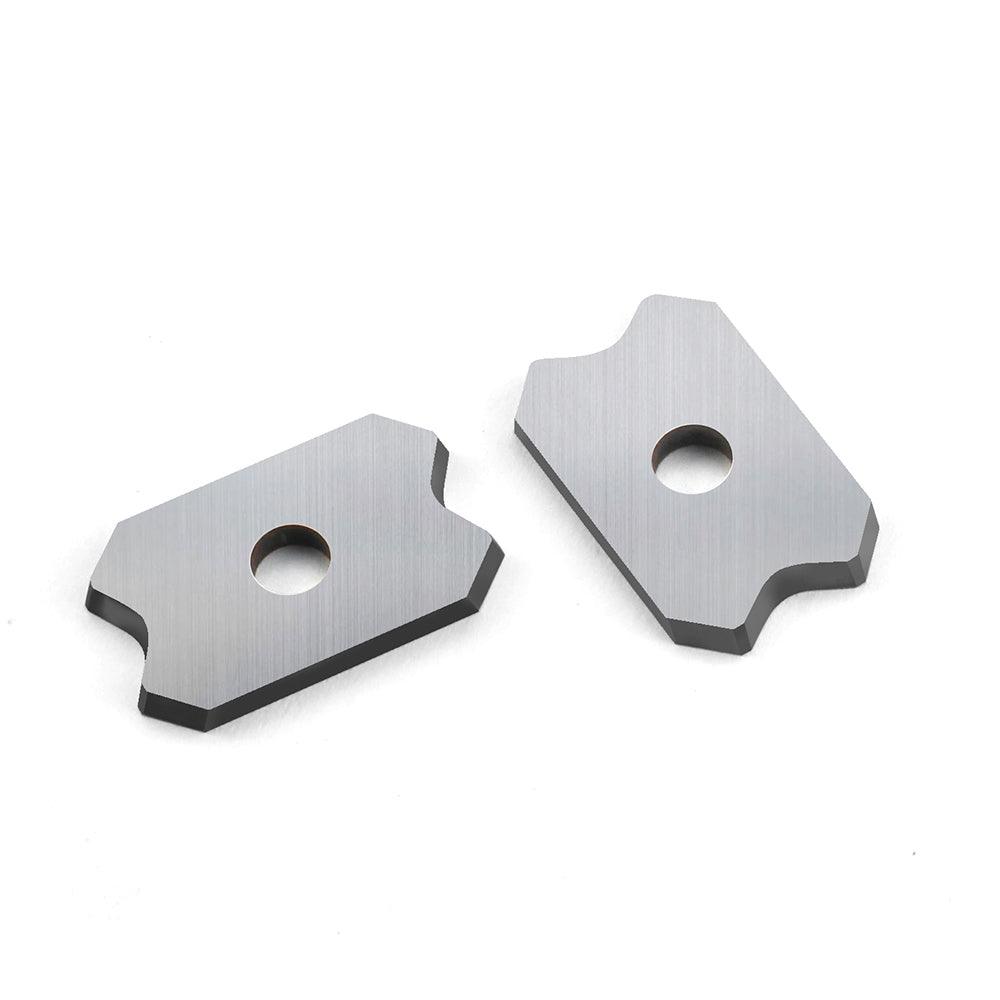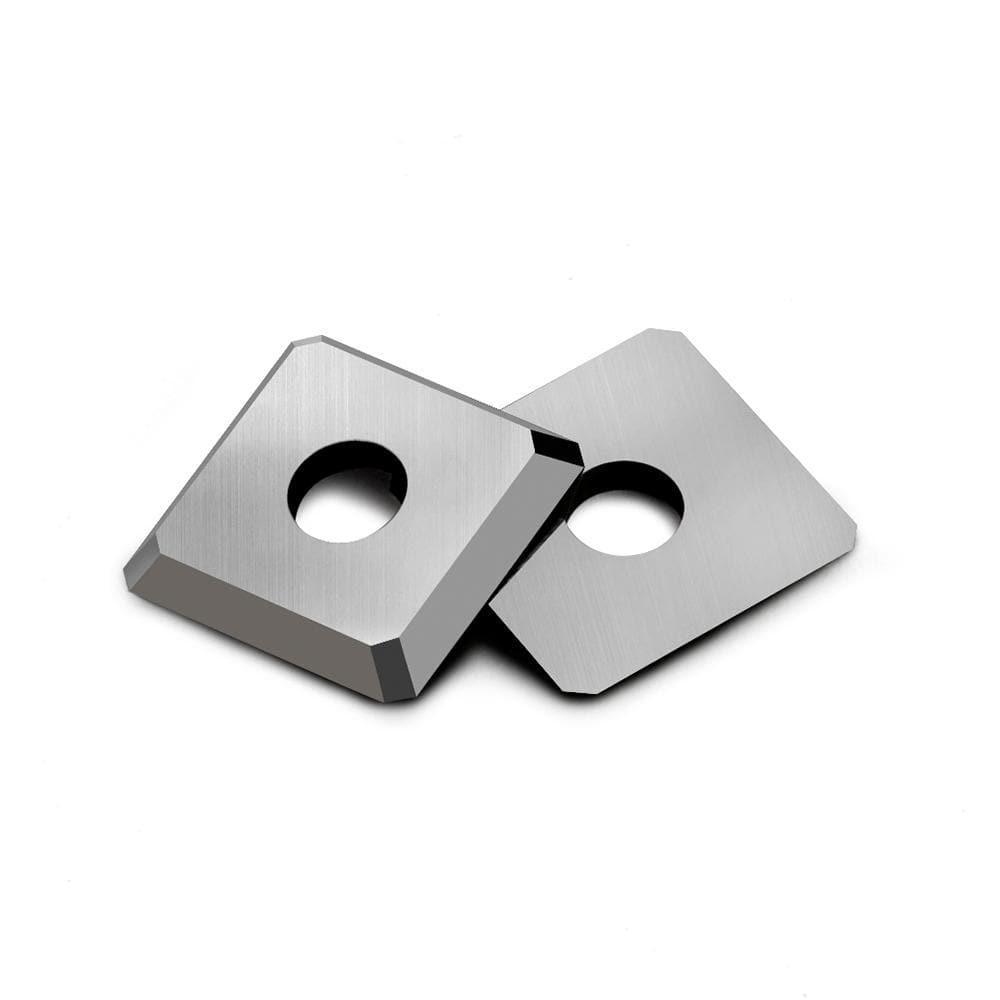How to choose carbide inserts
Choosing carbide inserts
involves considering various factors, including the specific application, material being machined, cutting conditions, and desired outcomes. Carbide inserts are widely used in metalworking industries for turning, milling, drilling, and other machining operations. Here's a comprehensive guide on how to choose carbide inserts:

1. Material Compatibility: Consider the material you will be machining. Different carbide inserts are designed to perform optimally on specific materials. Some common materials include:
a. Steel: For general steel machining, inserts with a medium to high cobalt content and a tough carbide grade are suitable. Coated inserts, such as PVD or CVD coatings, can enhance tool life and performance.
b. Stainless Steel: Machining stainless steel requires inserts with excellent heat resistance and wear resistance. Look for inserts with high cobalt content, advanced coatings like PVD TiAlN or TiCN, and optimized chip breakers.
c. Cast Iron: Inserts for machining cast iron should have good thermal shock resistance and wear resistance. Grades with high hardness and low cobalt content are preferred. Coatings like TiCN or TiAlN can improve performance.
d. Aluminum: Inserts for aluminum machining need to provide good chip evacuation and low friction. Look for grades with high thermal conductivity and specialized coatings like TiAlN or TiCN.
e. Heat-Resistant Alloys: For machining high-temperature alloys like Inconel or titanium, inserts with excellent heat resistance, high cobalt content, and advanced coatings like PVD TiAlN or TiCN are suitable.
f. Non-Ferrous Metals: Inserts for non-ferrous metals like copper, brass, or bronze should have good thermal conductivity and low affinity to the workpiece material. Coated inserts can reduce built-up edge (BUE) formation.
2. Cutting Speed and Feed Rate: Consider the cutting speed and feed rate required for your machining operation. Higher cutting speeds generally require inserts with higher wear resistance and toughness. Feed rates depend on the material and the desired chip control. Inserts with optimized chip breakers can help enhance chip evacuation and prevent chip packing.
3. Depth of Cut and Machining Conditions: The depth of cut and machining conditions, such as dry or wet cutting, also influence insert selection. Inserts with good heat resistance and wear resistance are suitable for high-speed, heavy cutting operations. For wet cutting, consider inserts with excellent chip control and coolant delivery features.
4. Insert Shape and Geometry: Carbide inserts come in various shapes and geometries to suit different machining operations. Some common insert shapes include:
a. Turning: For general turning operations, choose inserts with a neutral or positive rake angle. Positive rake inserts are suitable for low-power machines or when light cuts are required. Negative rake inserts
provide higher cutting forces but offer increased stability and longer tool life.
b. Milling: Milling inserts come in different geometries like square, round, or octagonal. Choose the appropriate insert shape based on the milling operation, such as face milling, shoulder milling, or slot milling.
c. Drilling: Drilling inserts are designed for hole-making operations. Consider factors like drill diameter, hole depth, and the type of drill (solid or indexable) when selecting the insert.
5. Coatings: Coatings on carbide inserts provide additional protection against wear, improve lubricity, and enhance tool life. Some common coatings include:
a. TiN (Titanium Nitride): Provides a general-purpose coating with improved wear resistance.
b. TiCN (Titanium Carbonitride): Offers higher hardness and better adhesion than TiN, suitable for machining steels and stainless steels.
c. TiAlN (Titanium Aluminum Nitride): Provides excellent heat resistance, toughness, and wear resistance, suitable for high-temperature alloys.
d. AlTiN (Aluminum Titanium Nitride): Combines the benefits of aluminum and titanium nitride coatings, offering increased tool life and improved performance in various materials.
6. Manufacturer and Grade: Consider the reputation and quality of the manufacturer when selecting carbide inserts. Well-established manufacturers often have a wide range of grades and geometries to choose from, along with reliable technical support.
7. Cost Considerations: Balancing cost and performance is essential. Higher-performing inserts with advanced coatings and grades may be more expensive but can provide longer tool life and improved productivity. Evaluate the cost-effectiveness based on the specific machining requirements and expected tool life.
8. Trial and Testing: If possible, conduct initial trials and tests with different insert grades and geometries to determine their performance in your specific application. This can help identify the most suitable insert for optimal results.

Remember, the selection of carbide inserts may vary depending on the specific requirements of your machining operation. It's always advisable to consult with tooling experts, manufacturers, or suppliers to get personalized recommendations based on your application and machining needs.